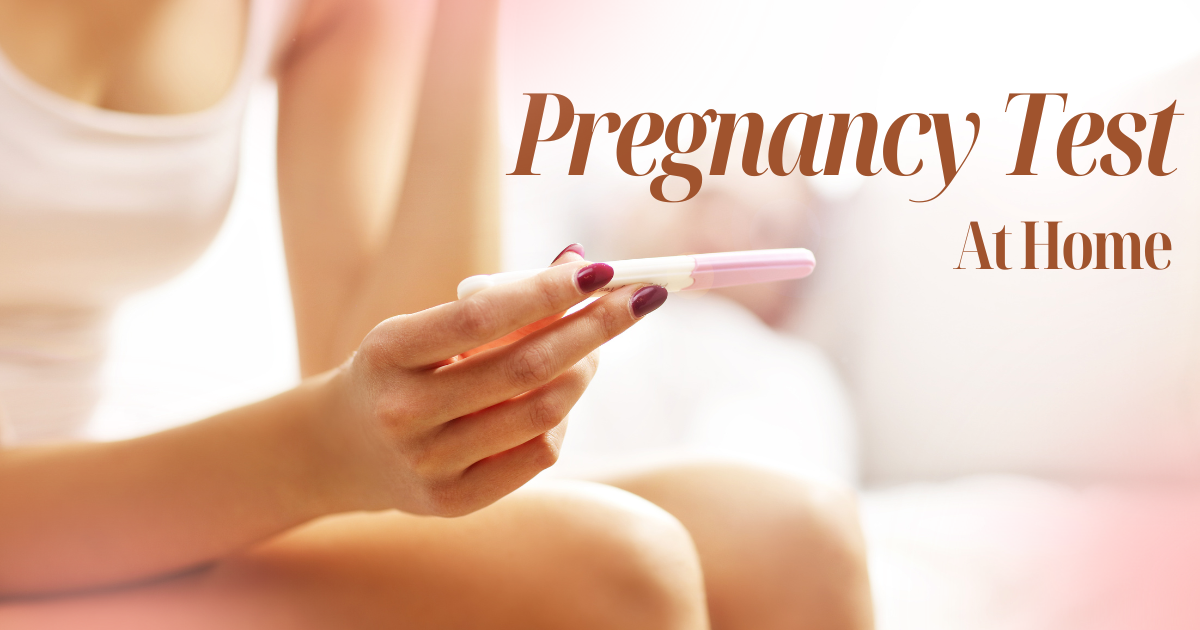How to Check Pregnancy at Home Easily and Safely

How to Check Pregnancy at Home Easily
Getting a positive pregnancy test can be one of the most life-changing moments. If you've missed your period or noticed changes in your body, you might be wondering how to confirm it. The good news is, you can easily check for pregnancy at home with simple tools and methods.
In this blog, you’ll learn:
-
How to check pregnancy at home
-
Common early signs of pregnancy
-
Best time to take a home pregnancy test
-
Natural and DIY methods (and their limitations)
-
Importance of medical tests like the double marker test in pregnancy
Let’s get started.
Why You Might Think You’re Pregnant
Sometimes, your body gives small signals before you even miss a period. These are called early signs of pregnancy. They include:
-
Feeling tired without reason
-
Nausea or morning sickness
-
Tender or swollen breasts
-
Mood swings
-
A missed period
-
Increased need to urinate
These signs don’t always mean you’re pregnant, but they’re worth paying attention to. If you experience more than one, it might be time to take a pregnancy test at home.
When Should You Take a Pregnancy Test at Home?
The best time to take a pregnancy test is after you miss your period. That’s when your body produces enough hCG (human chorionic gonadotropin) hormone to show a clear result.
You can test in the morning when your urine is most concentrated. This can give more accurate results. Make sure you read the instructions on the test kit carefully.
How to Check Pregnancy at Home
There are two main ways you can check pregnancy at home:
1. Using a Home Pregnancy Test Kit
This is the most reliable and easiest method. You can buy a kit at any medical store or online. Most kits come with a strip or a stick that reacts to your urine.
Steps to Use a Pregnancy Test Kit:
-
Collect your urine in a clean cup
-
Use a dropper (if provided) to put a few drops on the test strip
-
Wait for the time mentioned in the instructions (usually 5–10 minutes)
-
Read the results:
-
One line = not pregnant
-
Two lines = pregnant
-
Always double-check with another test after a couple of days if you’re unsure.
2. Natural or DIY Methods (Not Scientifically Reliable)
While many traditional methods are shared online, most are not medically accurate. However, here are a few common ones people try:
-
Toothpaste Test: Mix white toothpaste with urine. Some believe it changes color if you're pregnant. But this is not a reliable pregnancy test.
-
Sugar Test: Mix sugar with urine. If it clumps, some say it’s a sign of pregnancy. Again, no medical proof.
-
Soap Test: Pour urine on soap and watch for bubbles. Not trustworthy.
These methods might seem fun or easy, but you shouldn't rely on them for real confirmation.
What if the Home Pregnancy Test is Negative but You Still Feel Pregnant?
Sometimes, a pregnancy test at home shows a negative result even if you are pregnant. This can happen if:
-
You tested too early
-
The kit had expired or was not stored properly
-
Your urine was too diluted
Wait a few days and try again with the first urine of the morning. If your periods are still delayed, you should talk to your doctor.
How Accurate Are Home Pregnancy Tests?
Home pregnancy test kits are up to 99% accurate when used correctly and at the right time. But human error or testing too early can affect results.
Always follow the instructions and use a trusted brand. If you still have doubts, a visit to your gynecologist is the best next step.
What Happens After a Positive Pregnancy Test?
If your test is positive, congratulations!
Your next steps should include:
-
Booking an appointment with a doctor
-
Getting blood tests done to confirm and track pregnancy
-
Following a prenatal care routine
Double Marker Test in Pregnancy
Your doctor may recommend the double marker test in pregnancy. This is a blood test usually done in the first trimester (around 10–13 weeks). It checks the baby’s risk for genetic conditions like Down syndrome.
This test doesn’t confirm pregnancy, but it gives you important health information early on.
Benefits of Home Pregnancy Tests
-
Easy to use
-
Affordable and widely available
-
Quick results
-
Private and convenient
You don’t need to visit a clinic for an initial check. But for full confirmation, medical advice is always a must.
When to Consult a Doctor Immediately
Even if your home test is positive, contact your doctor quickly if you experience:
-
Severe cramps
-
Heavy bleeding
-
Dizziness or fainting
These might be signs of an ectopic pregnancy or other medical issues that need urgent care.
Tips for Taking a Pregnancy Test at Home
-
Use the first urine of the day
-
Don’t drink too much water before testing
-
Check the expiry date of the kit
-
Follow the instructions closely
FAQs About Home Pregnancy Testing
Can I take a pregnancy test at night? Yes, but morning urine gives more accurate results.
How soon can I test after sex? Wait at least 10–14 days for the most accurate result.
Can medications affect my pregnancy test? Most medicines don’t affect the result, but fertility drugs might.
How do I know the result is accurate? Check the control line. If it's missing, the test is invalid. Always use a second test to be sure.
Are faint lines a sign of pregnancy? Yes, even a faint second line usually means you’re pregnant. Repeat the test after 48 hours.
Final Thoughts
Knowing how to check pregnancy at home gives you control, privacy, and peace of mind. Whether you’re hoping for a baby or not, a quick home test can give clarity.
Always listen to your body. If you notice early signs of pregnancy, take a test and follow up with a medical professional for confirmation and guidance.
Remember: A home pregnancy test is just the first step. Good health, expert care, and informed choices matter most on this journey.


























